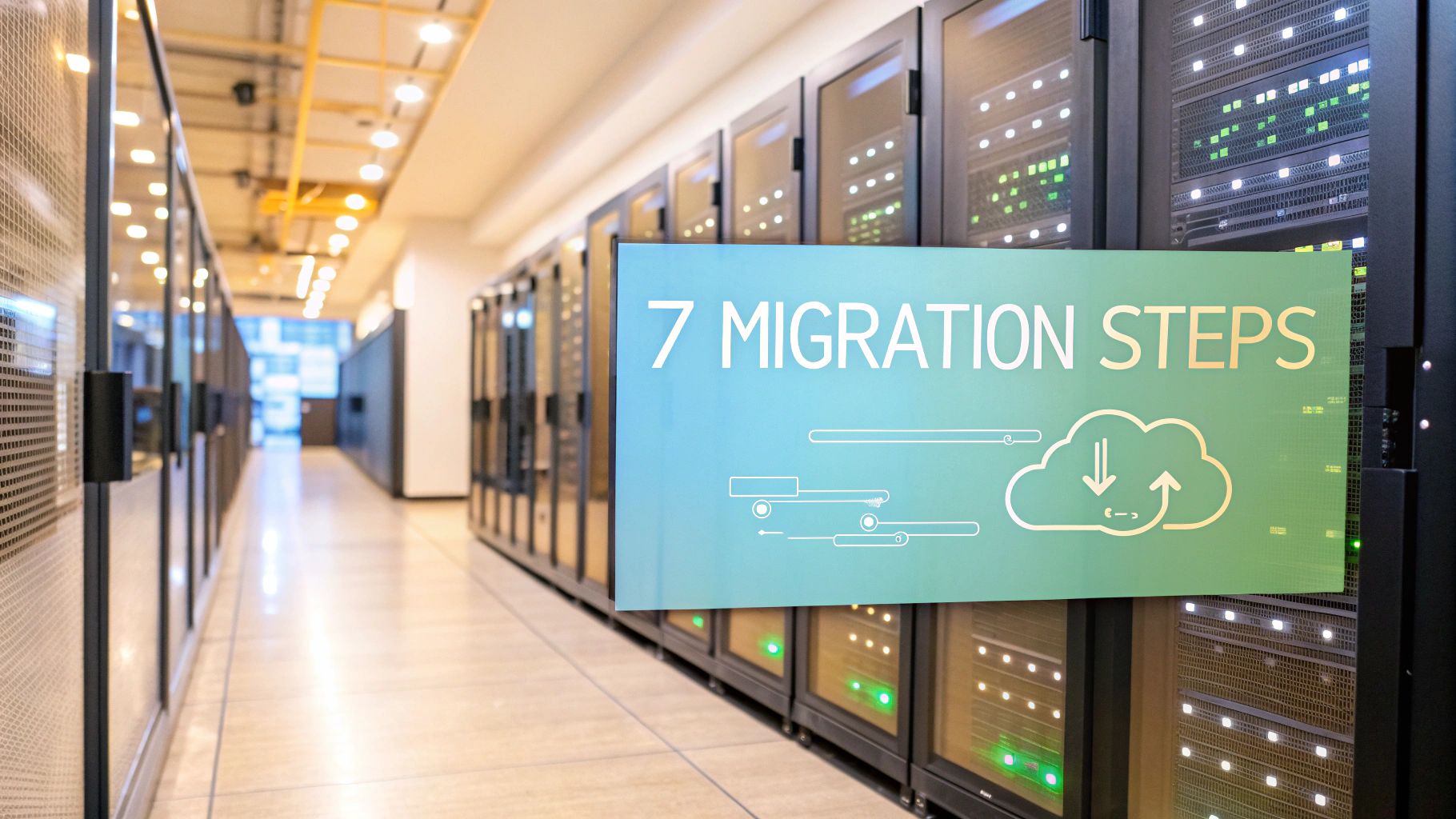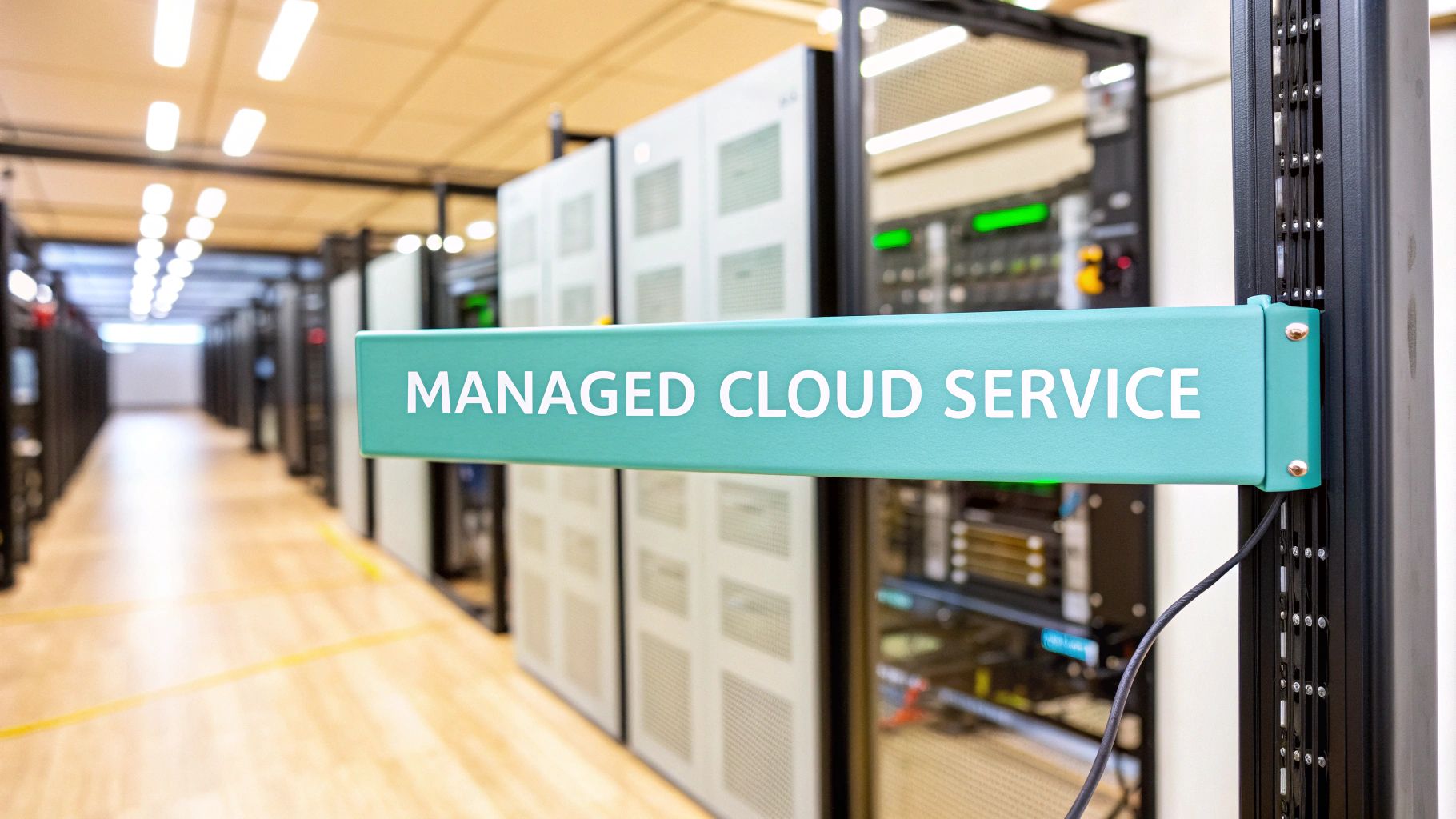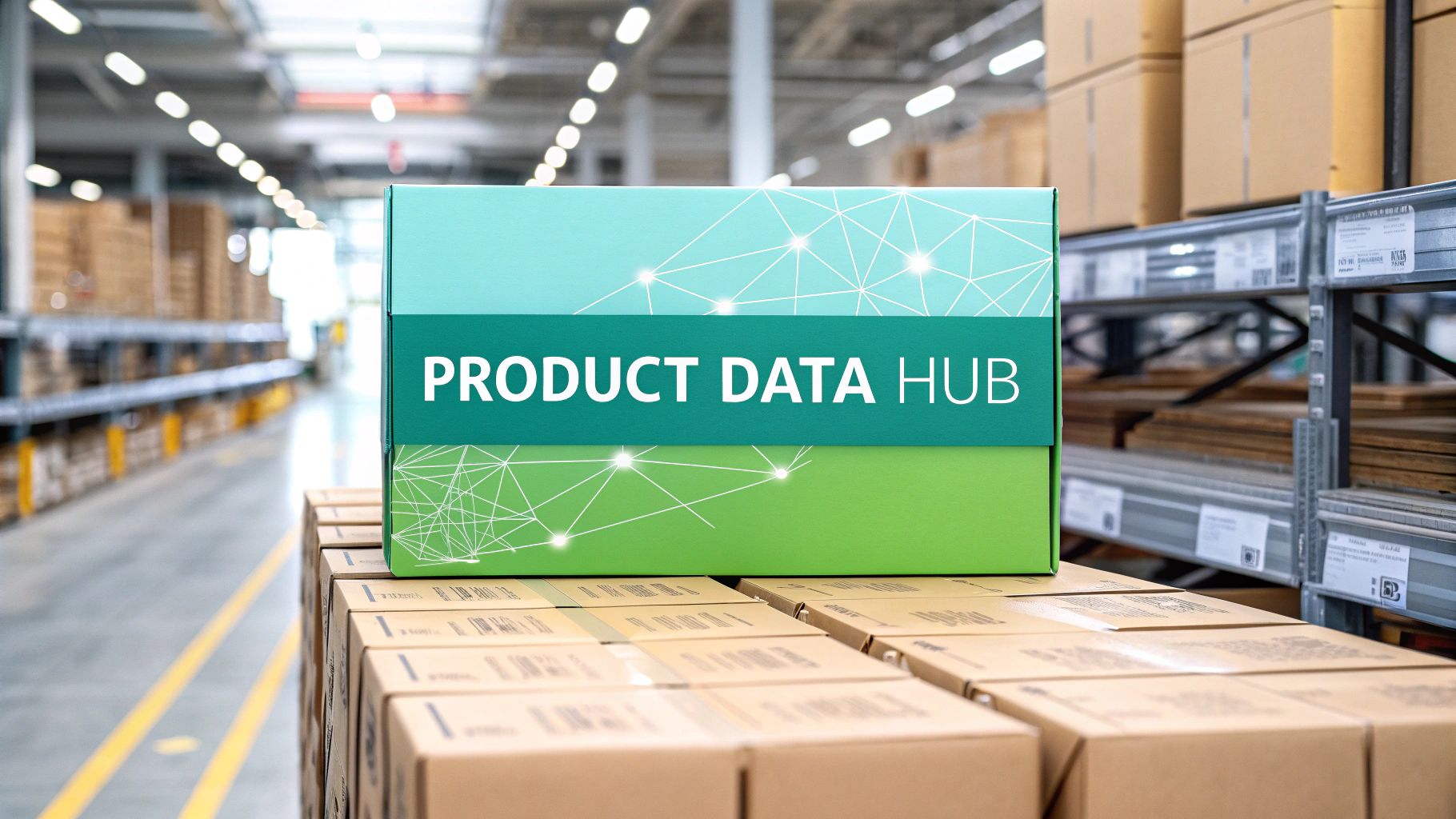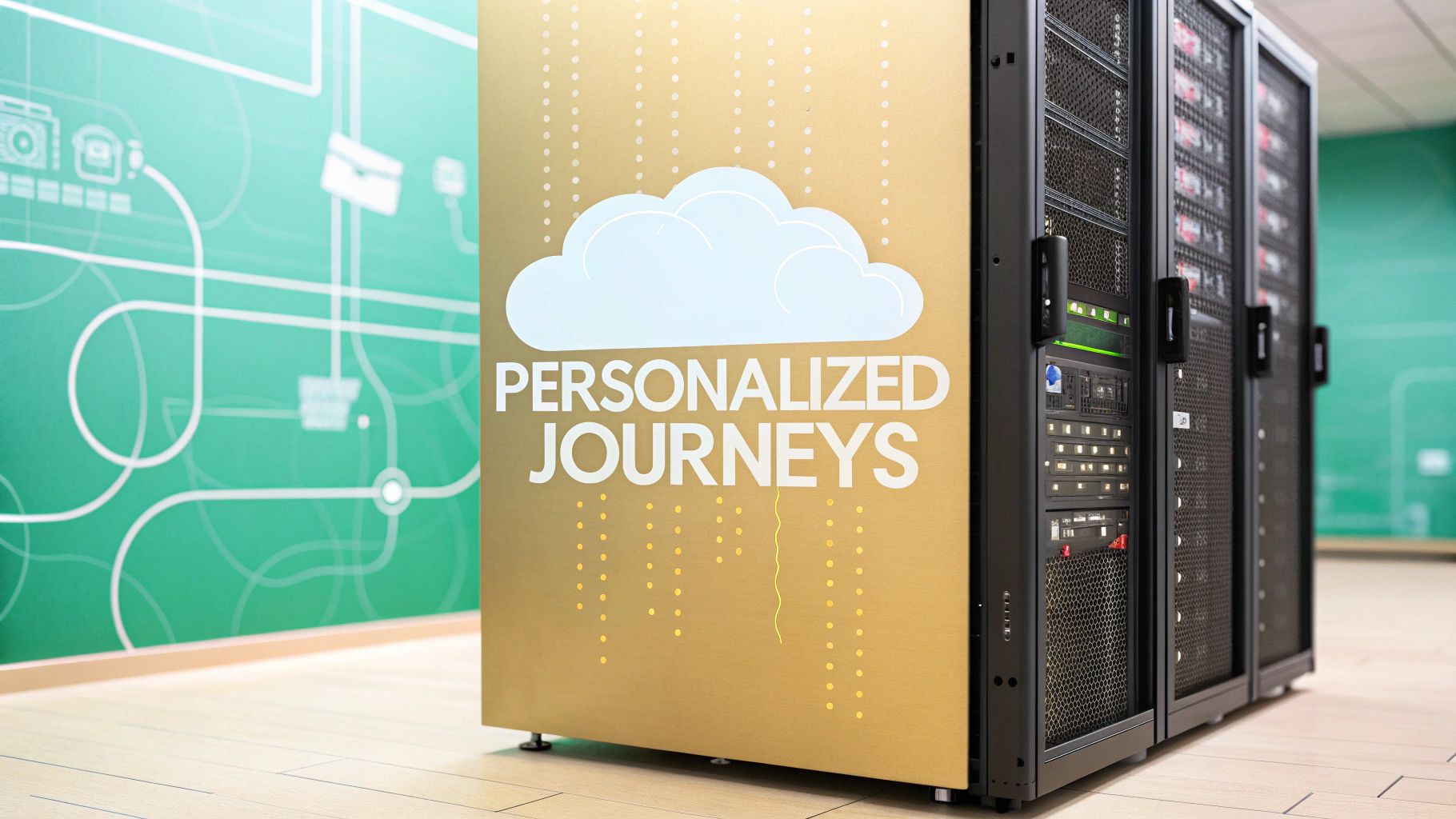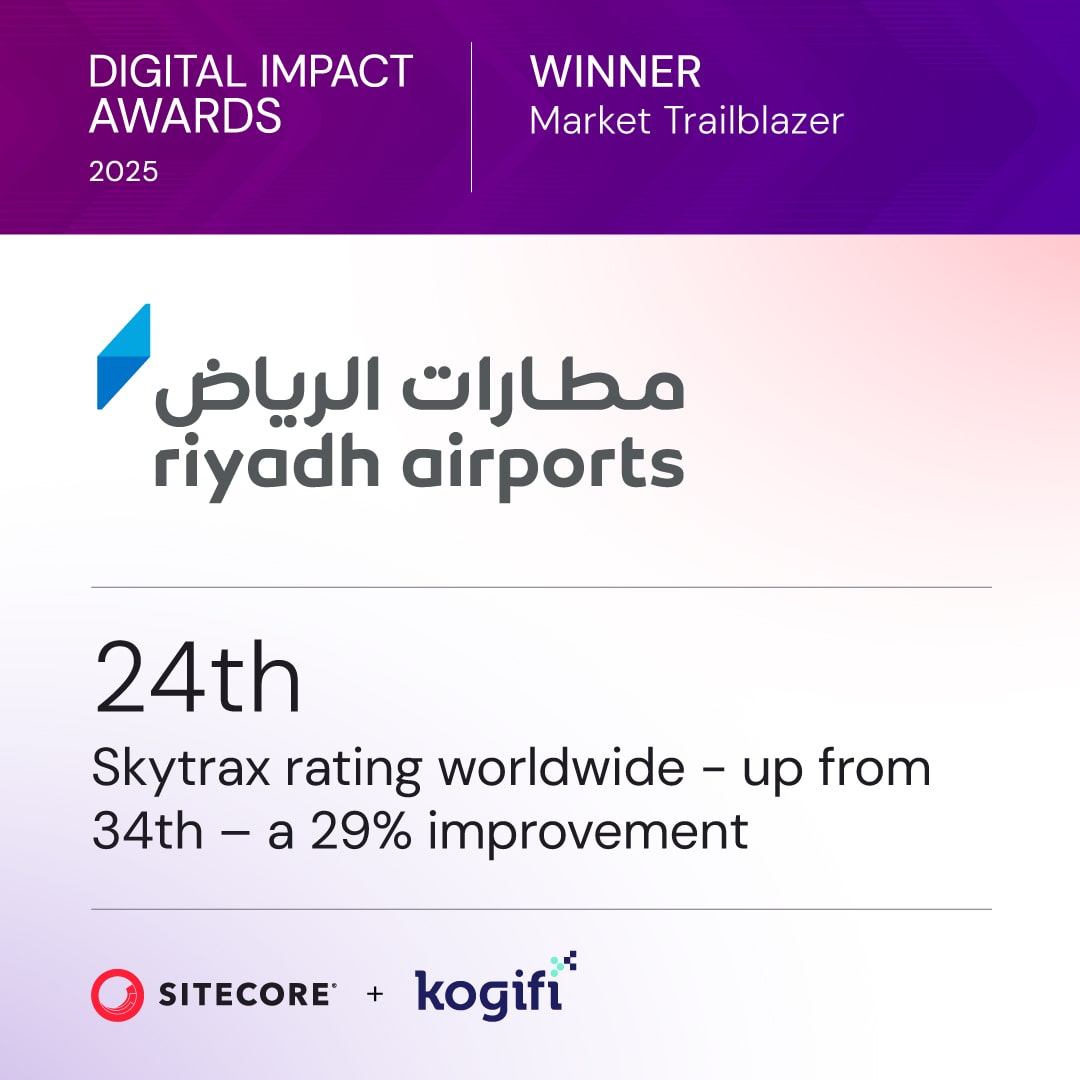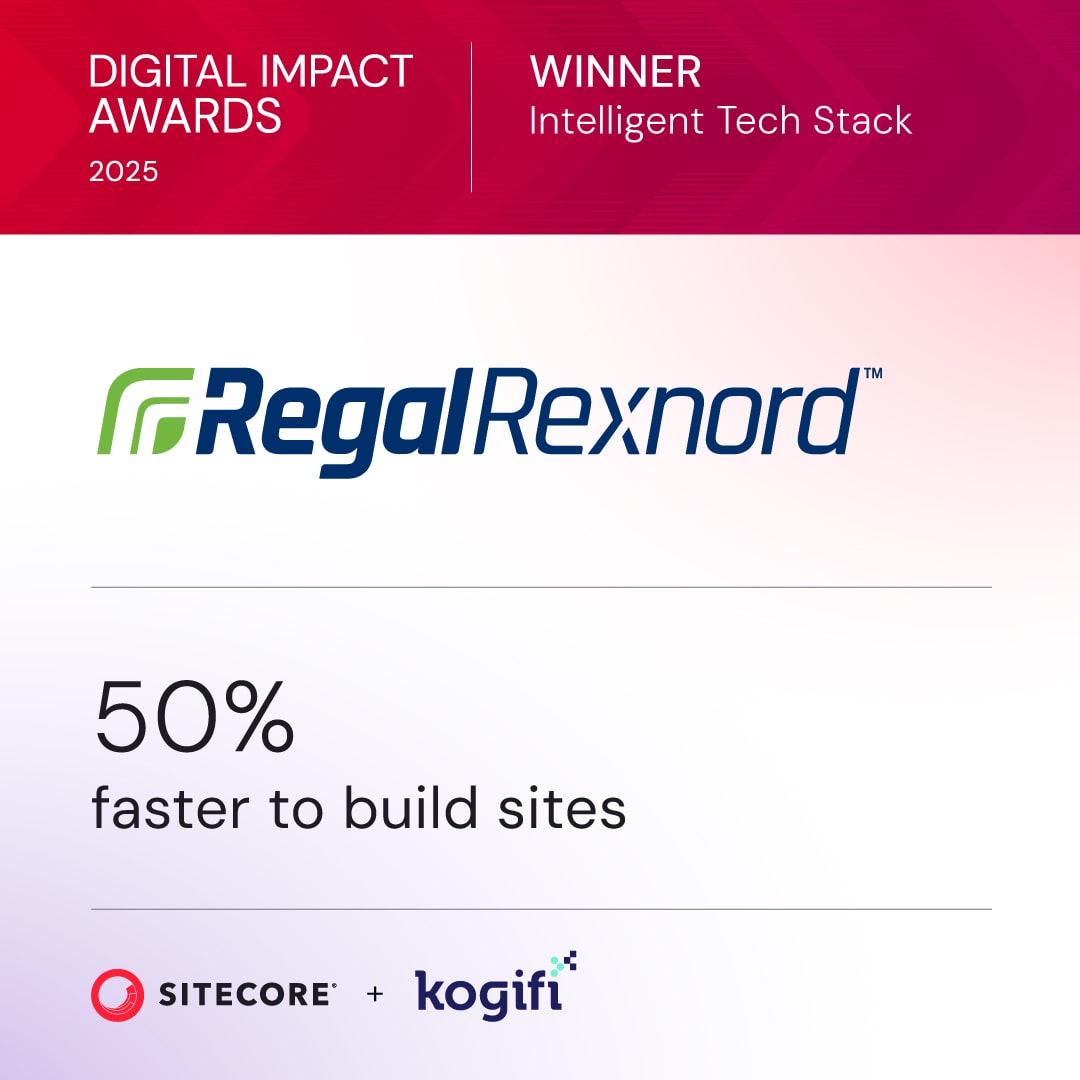In the world of sophisticated Digital Experience Platforms (DXP) and Content Management Systems (CMS), a database migration is far more than a simple data transfer. It's a critical infrastructure overhaul that underpins your entire digital presence. For platforms like Sitecore, with its interconnected xDB, and SharePoint, with its complex content databases, the stakes are exceptionally high. A flawed migration can lead to significant downtime, data loss, and a degraded user experience, directly impacting your business's bottom line. The process demands meticulous planning and deep technical expertise.
This article provides a definitive guide to database migration best practices, drawing on deep expertise in complex Sitecore and SharePoint ecosystems. We will move beyond generic advice to offer actionable strategies specifically tailored for the intricate nature of modern enterprise platforms. For an in-depth look at ensuring a smooth and successful transition, consider these 8 Essential Data Migration Best Practices as a valuable resource that complements the specialized focus presented here. Our goal is to equip your team with the knowledge needed to execute a seamless transition, minimizing risk and maximizing the return on your platform investment.
You will learn how to navigate every critical stage of the migration lifecycle, from initial planning and assessment to post-migration support. We will cover ten essential best practices, including:
- Comprehensive Planning and Assessment: Laying the foundational strategy for success.
- Phased Migration Approaches: Breaking down the process into manageable, low-risk stages.
- Thorough Testing and Validation: Ensuring data integrity and system functionality.
- Data Backup and Disaster Recovery: Building a resilient safety net.
- Post-Migration Support: Guaranteeing long-term stability and performance.
Whether you're upgrading versions, moving to the cloud, or re-platforming, these insights will help you architect a successful and seamless transition, safeguarding your digital assets and ensuring operational continuity.
1. Comprehensive Planning and Assessment
A successful database migration is built on a foundation of meticulous planning and a deep understanding of the existing environment. This initial phase is the most critical of all database migration best practices, as it directly impacts every subsequent step. Rushing this stage often leads to scope creep, unexpected downtime, and data loss. The goal is to create a comprehensive blueprint that leaves no stone unturned.
This involves a thorough audit of your current database system. You must document the schema, analyze data volume and growth projections, and identify all interconnected dependencies. For instance, in a Sitecore environment, this means not just analyzing the core, master, and web databases, but also every custom table, stored procedure, and dependent xDB Collection database. A Sitecore migration audit should also map dependencies to Sitecore Commerce, Content Hub, and any custom marketing automation activities that rely on specific database triggers or data.
Why It's a Critical First Step
Skipping a detailed assessment is like building a house without a blueprint. You might get a structure up, but it will be unstable and prone to collapse. A comprehensive plan helps you define clear success criteria, allocate the right resources, and establish a realistic timeline. It transforms the migration from a high-risk gamble into a calculated, strategic project. This is particularly vital in complex ecosystems like Sitecore or SharePoint, where hidden dependencies can derail the entire process.
Actionable Implementation Tips
To execute this phase effectively, focus on creating a detailed inventory and a clear project governance structure.
- Automate Discovery: Use automated tools to scan and catalog all database assets. For Sitecore, this includes a full inventory of the xDB shards, reporting databases, and any custom schemas supporting modules like Sitecore Forms Extensions.
- Establish Baselines: Before any migration activities begin, capture key performance metrics. Document query response times, CPU utilization, and I/O operations under typical loads. These baselines are essential for post-migration validation.
- Map All Dependencies: Identify and document every application, API, and service that connects to the database. In a SharePoint environment, this could include custom web parts, third-party integrations, and reporting services.
- Create a RACI Matrix: Clearly define who is Responsible, Accountable, Consulted, and Informed for each migration task. This eliminates confusion and ensures clear ownership.
Key Insight: The planning phase isn't just a technical exercise; it's a strategic one. It aligns technical teams with business stakeholders, ensuring the migration goals support broader organizational objectives. For a more detailed breakdown of project planning, you can review this digital platform migration checklist which covers many parallel concepts.
2. Phased Migration Approach
Rather than a high-risk "big bang" cutover, a phased migration divides the project into smaller, more manageable stages. This iterative approach is one of the most effective database migration best practices for complex systems because it dramatically reduces risk. Each phase can be individually executed, tested, and validated, allowing for course correction and learning before moving on to the next. This controlled process is essential for minimizing business disruption and ensuring a smooth transition.
For example, a large enterprise moving a Sitecore XP environment to XM Cloud would not attempt to migrate all website databases, xDB collections, and custom application data simultaneously. Instead, they might start by migrating a single, less critical website to establish a repeatable process, followed by progressively larger or more complex sites. This methodology ensures that lessons learned from the initial phase can be applied to subsequent, more critical stages of the migration.
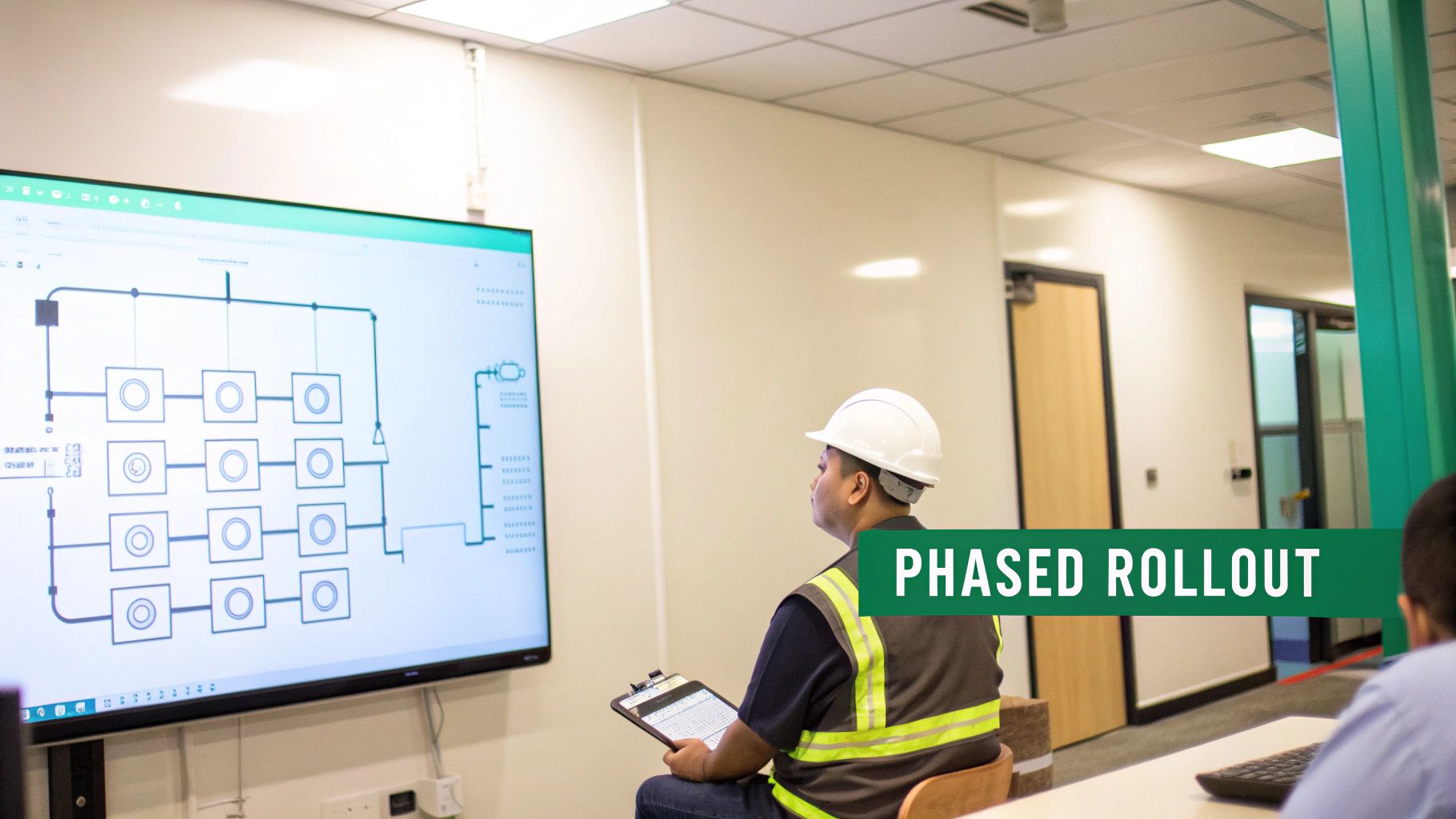
Why It's a Critical Next Step
A "big bang" migration concentrates all project risk into a single, high-stakes event. If anything goes wrong, the entire system can fail, leading to extended downtime and potential data loss. A phased approach distributes this risk over time. It allows teams to build confidence, refine their techniques, and handle unforeseen issues in a controlled environment. This is especially important in SharePoint migrations where user-generated content and complex permissions add layers of risk that are best addressed incrementally.
Actionable Implementation Tips
To implement a phased migration effectively, you must define clear boundaries and success criteria for each stage.
- Start with a Pilot: Begin with non-critical or low-impact data and applications. For a Sitecore project, this could be a developer-focused instance or a single, small brand site. This pilot serves as a proof-of-concept for testing migration scripts, tools like the Sitecore Content Export/Import tool, and rollback procedures.
- Define Entry/Exit Criteria: For each phase, clearly document what must be completed before it begins (entry criteria) and what constitutes success (exit criteria). This could include data validation checks, performance tests, and user acceptance testing.
- Maintain Dual Environments: During the transition, you may need to run the legacy and new systems in parallel. This allows for A/B testing and provides an immediate fallback option, although it requires careful data synchronization strategies.
- Schedule During Off-Peak Hours: Whenever possible, execute migration phases during periods of low user traffic, such as weekends or overnight. This further minimizes the potential impact on business operations.
Key Insight: A phased approach turns a monolithic, high-risk project into a series of manageable, low-risk sprints. It provides invaluable learning opportunities at each step, ensuring the final cutover is a well-rehearsed, predictable event. For a deeper look at managing project timelines, review these strategies on how to minimize downtime in Sitecore migrations.
3. Thorough Testing and Validation
A migration can only be deemed successful after it has been rigorously tested and validated from every angle. This phase confirms that the new database environment not only contains all the original data but also performs correctly and supports all dependent applications without degradation. Implementing a multi-layered testing strategy is a non-negotiable part of modern database migration best practices, acting as the final quality gate before the system goes live.
This process extends far beyond simple data record counts. For instance, in a SharePoint migration, it involves verifying that document permissions, version histories, and complex workflows function identically in the new SQL Server instance. It's about ensuring that custom web parts still retrieve data correctly and that search indexing behaves as expected. The goal is to simulate real-world usage and stress to uncover any issues before they impact end-users.
Why It's a Critical Validation Step
Without exhaustive testing, you are flying blind. A migration might appear successful on the surface, but hidden data corruption, performance bottlenecks, or broken application logic could cause catastrophic failures post-launch. Thorough validation provides empirical evidence that the migration has met its technical and business objectives. In a Sitecore context, this means validating that xDB contact data is fully intact and that the Experience Analytics reports are populated correctly, preventing a complete loss of marketing intelligence.
Actionable Implementation Tips
To ensure a comprehensive validation process, build a structured testing plan that covers data, performance, and functionality.
- Create Realistic Test Cases: Develop test scripts that mirror actual production workloads and user behaviors. Instead of generic queries, use scenarios specific to your platform, like testing a content author's publishing workflow in Sitecore or a complex search query in a SharePoint document library.
- Automate for Efficiency: Manually testing thousands of data points is impractical. Leverage automated testing frameworks to perform repetitive tasks like data integrity checks and regression testing. To guarantee the integrity and functionality of your database after migration, a robust testing strategy is essential. Explore modern automated testing best practices to build an efficient and reliable validation process.
- Perform Data Cross-Validation: Use checksums, row counts, and targeted data sampling to compare the source and target databases. Run identical queries against both systems and verify that the results are identical, ensuring no data was lost or transformed incorrectly.
- Include Negative Testing: Don't just test for success. Actively try to break the system by testing edge cases and invalid inputs. This helps identify how the new environment handles unexpected scenarios and ensures its resilience.
Key Insight: Testing is not a single event but a continuous process. Start testing early with smaller data sets in a development environment and progressively increase the scale and complexity as you move toward production, culminating in a full-dress rehearsal.
4. Data Backup and Disaster Recovery Planning
Even the most well-planned migration carries inherent risks. A robust data backup and disaster recovery (DR) strategy is not an optional add-on; it's a non-negotiable insurance policy against unforeseen complications. This practice involves creating complete, verified copies of your entire database environment before the migration begins and having a documented, tested plan to revert to the original state if anything goes wrong.
This goes beyond a simple database dump. For a Sitecore migration, it means backing up not just the core, master, and web databases but also the xDB collection shards, reporting databases, and any custom databases integrated into the solution. A failure at any point without a solid rollback plan could lead to catastrophic data loss, extended downtime, and a complete project failure.
Why It's a Critical Safety Net
Embarking on a migration without a DR plan is like performing a high-wire act without a net. The potential for failure, however small, always exists. A comprehensive backup provides the confidence to proceed, knowing you can quickly restore operations if a critical error occurs. This plan minimizes business disruption, protects data integrity, and is a cornerstone of responsible data governance. In platforms like SharePoint, where configurations, content databases, and service applications are deeply intertwined, a partial backup is effectively no backup at all.
Actionable Implementation Tips
To build an effective backup and recovery strategy, focus on completeness, testability, and speed.
- Implement a Multi-Layered Backup: Take a full backup of the database immediately before the migration window opens. Additionally, ensure you have transaction log backups to enable point-in-time recovery if needed. For Sitecore, this should include all SQL databases and the MongoDB or Azure Cosmos DB instances for the xDB Collection.
- Test Your Restoration Process: A backup is only valuable if it can be successfully restored. Before the migration, perform a trial restoration of your backups to a separate, isolated environment to verify their integrity and document the exact time it takes.
- Document a Step-by-Step Rollback Plan: Create a clear, sequential checklist for reverting the migration. This document should detail every step, from restoring databases to re-pointing application connection strings and DNS records.
- Automate Backup Verification: Use scripts or built-in database tools to automatically verify the integrity of your backup files (e.g., using
RESTORE VERIFYONLYin SQL Server). This catches corruption before it becomes a crisis.
Key Insight: Your disaster recovery plan is an essential component of your overall risk management strategy. Integrating it into your initial planning phase ensures that potential failures are identified and mitigated proactively. You can discover more about this in our guide to pre-migration risk assessment, which highlights how to prepare for every eventuality.
5. Parallel Run Testing (Dual Systems)
One of the most robust, risk-averse database migration best practices is to run the old and new database systems in parallel for a defined period. This "dual systems" approach involves directing live traffic or processes to both environments simultaneously, allowing for real-world comparison of operations, performance, and data consistency. It provides the ultimate confidence that the new system is fully operational and correct before the final cutover.
This method moves beyond simulated testing by using actual production workloads to validate the new database. For a Sitecore migration, this could mean configuring a load balancer to send a percentage of traffic to the new infrastructure while the old one continues to serve the majority. The results, logs, and performance data from both systems are then compared in real-time to identify any discrepancies. This ensures that personalization rules, analytics tracking, and content delivery are functioning identically on the new platform.
Why It's a Critical Validation Step
Parallel run testing is the final and most definitive proof of migration readiness. It answers the critical question: "Will the new system perform exactly like the old one, but better?" By comparing the two systems under identical, real-world conditions, you eliminate assumptions and uncover subtle issues that pre-production testing might miss. This is particularly crucial for complex Sitecore XP environments where analytics and personalization outcomes must be validated with live user data.
Actionable Implementation Tips
To execute a parallel run test effectively, you need a clear strategy for traffic management, data comparison, and success measurement.
- Define Clear Success Criteria: Before starting, establish specific, measurable criteria for success. This includes acceptable performance variance (e.g., query response times within 5%), zero data discrepancies, and identical application behavior.
- Use Intelligent Traffic Routing: Employ a load balancer or a feature flagging system to control the flow of traffic to each environment. Start with a small percentage (e.g., 1-5%) and gradually increase it as confidence in the new system grows.
- Automate Data Reconciliation: Manually comparing data is impractical. Use automated scripts and tools to continuously compare datasets between the source and target databases, flagging any inconsistencies for immediate investigation.
- Implement Real-Time Monitoring: Deploy robust monitoring and alerting on both systems. Track key metrics like CPU usage, memory consumption, query throughput, and error rates to compare performance and detect anomalies instantly.
Key Insight: Parallel run testing is the ultimate safety net. While it requires more initial setup and infrastructure resources, the cost is minimal compared to the potential business impact of a failed cutover. It transforms the final go-live from a high-stakes event into a controlled, low-risk transition.
6. Change Management and Communication Strategy
A database migration is as much a people project as it is a technical one. A robust change management and communication strategy is essential to manage expectations, mitigate resistance, and ensure a smooth transition for everyone involved. This component of database migration best practices focuses on keeping all stakeholders informed and prepared, transforming potential friction into collaborative momentum. Neglecting this often leads to user frustration, helpdesk overloads, and a perception of failure even if the technical migration is flawless.
The goal is to proactively address the human element of the migration. This involves creating a structured communication plan that details what will be communicated, to whom, when, and through which channels. For instance, migrating a Sitecore platform impacts content authors, marketers, and IT support teams differently. A one-size-fits-all email won't suffice; each group requires tailored information about how the changes will affect their specific workflows and responsibilities.
Why It's a Critical Human-Centric Step
A migration without communication creates an information vacuum, which stakeholders will fill with assumptions and anxiety. A clear strategy builds trust, ensures organizational alignment, and empowers users to adapt quickly. It provides a framework for training, support, and feedback, turning end-users into project advocates rather than adversaries. In a SharePoint migration, this means preparing business users for changes in document library structures or user interfaces, preventing productivity dips post-launch.
Actionable Implementation Tips
To execute an effective change management strategy, focus on clarity, consistency, and targeted messaging.
- Communicate Early and Often: Begin communicating as soon as the project is approved. Provide regular updates on progress, key milestones, and any potential impacts. A project kickoff announcement followed by bi-weekly updates is a good starting point.
- Segment Your Audience: Tailor your messages for different groups. Executives need to know about business impact and ROI, while a Sitecore content editor needs to understand new login procedures or changes to the content tree.
- Provide Diverse Training Formats: Cater to different learning styles by offering a mix of live training sessions, pre-recorded video tutorials, and comprehensive written documentation. This ensures everyone has the resources they need to succeed.
- Establish a "War Room" or Command Center: During the critical cutover period, create a central point of contact for immediate issue resolution. This team should include technical experts and key business stakeholders to make rapid decisions.
Key Insight: Successful change management isn't just about sending emails; it's about creating a dialogue. It ensures that technical success is matched by user adoption and satisfaction, which is the ultimate measure of a migration's value.
7. Performance Optimization and Monitoring
A successful database migration doesn’t end when the data is moved; it’s validated by the new system's performance under real-world conditions. This best practice involves establishing performance baselines before migration and continuously monitoring the new environment post-launch. The goal is to ensure the new database meets or exceeds the performance of the old system, handling production loads efficiently without degradation.
This process includes proactive query optimization, index tuning, and appropriate resource allocation. For a Sitecore migration to Azure SQL, for instance, this means not just monitoring the core, master, and web databases, but also ensuring the xDB Collection shards and related reporting services respond with the required speed. Neglecting this step can lead to a technically successful migration that is a functional failure due to slow application performance and poor user experience.
Why It's a Critical Ongoing Step
Ignoring performance monitoring is like flying a plane without instruments. The migration might seem complete, but you have no visibility into resource bottlenecks, slow queries, or impending capacity issues. Establishing baselines provides a concrete benchmark to measure success and quickly identify regressions. Continuous monitoring transforms database management from a reactive, crisis-driven task into a proactive, strategic operation, ensuring long-term stability and scalability.
Actionable Implementation Tips
To effectively manage performance, you need a data-driven approach supported by powerful tooling and clear service-level agreements (SLAs).
- Establish Detailed Baselines: Before migration, capture key metrics over a full business cycle. Document average query execution times, CPU and memory usage, and I/O throughput. This data is your "source of truth" for post-migration validation.
- Leverage APM Tools: Use tools like New Relic or Datadog to get a holistic view. In a Sitecore PaaS or XM Cloud environment, leverage Azure Application Insights to monitor database DTU usage, query performance, and identify potential throttling.
- Configure Proactive Alerting: Set up automated alerts for key performance indicators (KPIs) like high CPU utilization, long-running queries, or low free disk space. This allows your team to address potential issues before they impact users.
- Regularly Tune and Optimize: Schedule regular performance reviews to analyze query execution plans, identify missing or unused indexes, and re-evaluate resource allocation. In a SharePoint farm, this could involve optimizing search crawl schedules or tuning large list query thresholds.
Key Insight: Performance is not just a technical metric; it's a direct driver of user experience and business outcomes. A 100-millisecond delay in page load time can directly impact conversion rates, making continuous performance optimization a critical business function, not just an IT task.
8. Data Validation and Reconciliation
A database migration's success is ultimately measured by the integrity of the data in the target system. Data validation and reconciliation are the systematic processes that verify this integrity, ensuring that data is accurate, complete, and consistent after being moved. This is not a simple post-migration check; it's a continuous activity performed before, during, and after the migration. It involves comparing data between the source and target systems to identify and rectify any discrepancies, making it one of the most crucial database migration best practices.
For example, when migrating Sitecore xDB data, this process involves more than just matching contact record counts. It requires verifying the integrity of interaction facets, ensuring custom marketing automation enrollments are preserved, and confirming that historical analytics data aligns perfectly. Without rigorous validation, you risk basing future business decisions on corrupted or incomplete data.
Why It's a Critical Validation Step
Skipping or superficially performing data validation is equivalent to accepting a shipment without checking the contents. You might have the right number of boxes, but the items inside could be broken or missing entirely. In a database context, this can lead to application failures, incorrect business reporting, and a severe loss of user trust. For systems governed by compliance, like healthcare data under HIPAA, flawed data can lead to significant legal and financial penalties.
Actionable Implementation Tips
To execute this phase with precision, focus on a multi-layered validation strategy that covers every aspect of your data, from individual records to high-level business logic.
- Develop Validation Scripts Early: Create and test data validation scripts before the migration begins. These scripts can automate checks for record counts, checksums, and specific data field comparisons, saving significant time and reducing human error.
- Validate at Multiple Levels: Don't just check table-level row counts. For Sitecore, this means validating item versions, workflow states, and language variants. Implement validation at the row level, table level, and database level.
- Reconcile Business Logic: For complex systems like SharePoint, verify that business logic embedded in workflows or calculated fields produces the same results in the target environment. This ensures that data transformations did not introduce subtle but critical errors.
- Document Every Result: Maintain a detailed log of all validation tests and their outcomes. This documentation is vital for audit trails, compliance reporting, and provides a clear record for troubleshooting any identified discrepancies.
Key Insight: Data validation is not just about confirming that data was moved; it's about proving that its value and meaning were preserved. It builds confidence among stakeholders and ensures the new system is a reliable source of truth from day one.
9. Security and Compliance Management
Database migration is not merely a technical data transfer; it is a transfer of responsibility for protecting sensitive information. Effective security and compliance management ensures that your data's integrity and confidentiality are maintained or enhanced post-migration. This critical practice involves embedding security controls throughout the entire process, from initial assessment to final cutover, to meet regulatory standards like GDPR, HIPAA, or PCI-DSS.

This process includes a comprehensive review of encryption, access controls, audit logging, and vulnerability management in both the source and target environments. For instance, when migrating a Sitecore xDB Collection database containing personally identifiable information (PII), you must ensure the target environment, such as Azure SQL, is configured with Transparent Data Encryption (TDE) and that all data in transit is protected using TLS.
Why It's a Critical Security Step
Neglecting security during a migration is a direct invitation for a data breach. A migrated database with misconfigured permissions or unencrypted data becomes a prime target for malicious actors. Proactively managing security and compliance transforms the migration into an opportunity to strengthen your data governance, rather than creating new vulnerabilities. In regulated industries, failing to document and implement these controls can lead to severe financial penalties and reputational damage.
Actionable Implementation Tips
To embed robust security into your migration, adopt a defense-in-depth strategy that addresses data at every stage.
- Conduct a Pre-Migration Security Audit: Assess the security posture of both the source and target systems. Identify existing vulnerabilities, review current access control lists, and document the compliance requirements specific to your data.
- Encrypt Data at Rest and in Transit: Utilize platform-native encryption tools like Azure Transparent Data Encryption or AWS Key Management Service (KMS) for data at rest. Always enforce TLS/SSL for data moving between the source, migration tools, and the target database.
- Implement the Principle of Least Privilege: Review and re-establish all user permissions in the new environment. Do not simply copy old roles. Grant access based on the minimum level required for users and applications to perform their functions.
- Enable Comprehensive Audit Logging: Configure detailed audit trails in the target database from day one. This logging is essential for monitoring access, detecting suspicious activity, and provides a clear record for compliance auditors.
Key Insight: Security is not a post-migration cleanup task; it's a parallel workflow that must be integrated into every phase. Use the migration as a strategic opportunity to modernize your security controls and align them with current compliance mandates.
10. Post-Migration Support and Knowledge Transfer
A successful database migration doesn’t end when the final byte of data is transferred. The go-live event is merely the beginning of a critical transition period where robust support and effective knowledge sharing are paramount. This phase focuses on stabilizing the new environment, resolving emergent issues swiftly, and empowering the internal operations team to manage the system independently.
This involves establishing a dedicated post-migration support structure to handle everything from performance tuning to unexpected application errors. For a platform like Sitecore, this means having experts on standby who understand the intricacies of the new database connections with the Content Delivery (CD) and Content Management (CM) roles. Without this structured handover, the project's long-term success is at risk, as small issues can escalate into major operational disruptions.
Why It's a Critical Final Step
Neglecting post-migration support is like launching a rocket and then abandoning mission control. The initial period is when the system is most vulnerable to unforeseen problems. A dedicated support team and a formal knowledge transfer process ensure a smooth transition to business-as-usual operations. It prevents the project team from being indefinitely pulled into support tasks and builds lasting internal capability, which is a core tenet of effective database migration best practices.
Actionable Implementation Tips
To effectively manage the post-launch phase, focus on creating a clear support framework and a comprehensive knowledge repository.
- Establish a Hypercare Period: Dedicate a support team, often a mix of the migration team and operations staff, for a fixed period (typically 4-12 weeks) post-migration. This team provides elevated, prioritized support to quickly address any issues that arise.
- Create Detailed Runbooks: Document step-by-step procedures for common operational tasks, such as backup and recovery, performance monitoring, and handling specific application errors. For SharePoint, this would include steps for re-indexing a search service application connected to the new database.
- Conduct Formal Knowledge Transfer Sessions: Schedule structured walkthroughs and training sessions for the operations team. Cover the new architecture, all customizations, monitoring tools, and escalation procedures. For a Sitecore migration, this includes training on new Azure portal features for managing PaaS databases.
- Document All Issues: Maintain a log or knowledge base of all incidents encountered and their resolutions. This creates an invaluable resource for future troubleshooting and helps identify recurring problems.
Key Insight: The goal of post-migration support isn't just to fix problems; it's to build confidence and self-sufficiency within the organization. This final step transforms a one-time project into a sustainable, long-term operational asset. To delve deeper into structuring this crucial phase, explore these support strategies for successful digital experience platforms.
Top 10 Database Migration Best Practices Comparison
Achieving Migration Excellence with an Expert Partner
Embarking on a database migration is a significant undertaking, one that demands more than just technical proficiency. It requires a strategic vision, meticulous planning, and an unwavering commitment to quality. Throughout this guide, we've explored ten essential database migration best practices that form the blueprint for a successful transition, from initial assessment to post-migration support. These principles are not merely a checklist; they are an integrated framework designed to de-risk complex projects and maximize the value of your technology investment.
The journey begins with comprehensive planning and a phased approach, ensuring the project is manageable and outcomes are predictable. It continues through rigorous testing, robust backup strategies, and the critical step of parallel run testing, which validates the new system against the old in a real-world environment. Each practice, from change management to performance monitoring and data reconciliation, plays a pivotal role in ensuring a seamless and secure transition.
From Blueprint to Reality: The Value of Specialized Expertise
While these best practices provide a universal roadmap, their application within specialized platforms like Sitecore and SharePoint introduces unique complexities. A generic approach simply isn't sufficient when dealing with the intricate data structures of the Sitecore Experience Database (xDB) or the customized content hierarchies within a SharePoint farm. This is where the value of a specialized partner becomes undeniable.
An expert partner doesn't just follow the blueprint; they understand the architectural nuances that can make or break a migration. Consider these scenarios:
- Sitecore xDB Migrations: Moving terabytes of analytics and personalization data requires deep knowledge of Sitecore's data architecture, collection APIs, and reporting databases. A specialist understands how to migrate this data without losing historical context, ensuring your personalization engine continues to operate effectively post-migration.
- SharePoint Content Databases: Migrating SharePoint involves more than just SQL databases. It includes managed metadata, user profiles, and complex permission structures. An expert can navigate these interdependencies, ensuring that documents, lists, and collaborative features function correctly in the new environment.
Executing these database migration best practices with platform-specific insight transforms a potentially disruptive project into a strategic advantage. It ensures that the migration not only preserves data integrity but also sets the stage for enhanced performance, scalability, and security. It's about turning a technical necessity into a catalyst for business growth.
Your Next Step Towards a Flawless Migration
Mastering these concepts is the first step. The next is to apply them with precision and foresight. A successful database migration is the foundation upon which your digital experiences are built. For platforms like Sitecore and SharePoint, this foundation must be flawless to support the rich, personalized, and collaborative experiences your users expect. By internalizing and implementing these best practices, you move beyond simply "lifting and shifting" data. You are strategically evolving your digital infrastructure, ensuring it is robust, resilient, and ready for future innovation. The ultimate goal is not just to complete the migration but to emerge with a stronger, more capable platform that empowers your organization to achieve its digital ambitions.
Ready to ensure your Sitecore or SharePoint migration is a resounding success? Partner with Kogifi to leverage over a decade of specialized expertise in executing complex database migrations with precision and confidence. Visit Kogifi to learn how our proven application of these database migration best practices can safeguard your data and accelerate your digital transformation journey.

















